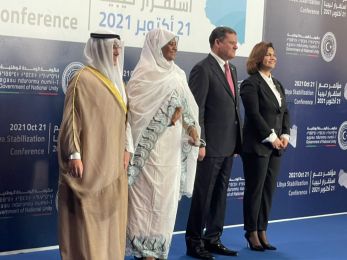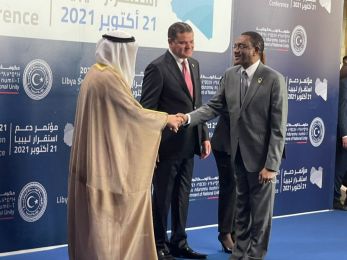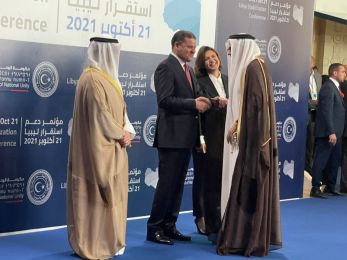Heavy external debt burden suppresses African development endeavours
Abidjan, Cote d’Ivoire (PANA) - There could be no recovery from the current economic malaise without addressing Africa’s external debt burden of US$700 billion, the continent’s top banker, Dr. Akinwumi A. Adesina, remarked at the Finance in Common Summit that last week discussed how to achieve a green and resilient recovery in Africa.
The African Development Bank (AfDB) president had joined peers from all over the world for the Spring meetings of the Finance in Common Summit.
African Public Development Banks gathered at the Summit have committed to support African heads of state and international organisations to finance the needed transitions and transformation of African economies.
“In the context of the Covid-19 crisis recovery, our efforts will centre on achieving sustainable, resilient and equitable development,” they said in a joint declaration.
There are 95 public development banks in Africa operating at sub-national, national and regional levels, which invest $24 billion every year.
“As expressed at the first Finance in Common Summit in November 2020, we are willing and ready to enhance cooperation among us to build a financial system consistent with the objectives of the Paris Agreement and the United Nations Sustainable Development Goals,” the declaration said.
In dealing with the crosscutting issues of climate and private sector involvement, the African public development banks noted that they “are uniquely positioned to provide effective financing support,” which includes mobilising private investment and domestic savings.
However, African development finance institutions still face some major obstacles in developing the required instruments to help them fully tackle the impacts of climate change and further strengthen the African private sector, notably to effectively manage risks.
“We call on heads of state and international organisations to support our role in the African financial system and to provide us with the necessary means and incentives. These incentives are: a clearer mandate for climate and delivery on the UN Sustainable Development Goals; additional capacity building; greater access to concessional resources as well as reinforcement of our capital bases; taking advantage of the expected issuance of special drawing rights by the International Monetary Fund,” the declaration reads.
“African countries are facing a huge investment gap. At the same time, they must address their debt service payments, which weigh significantly on their ability to finance their development programmes. African countries should be enabled to face this debt challenge in order to help preserve financial stability on the continent.”
The declaration was signed by Association of African Development Finance Institutions, namely, African Development Bank; West African Development Bank; Trade Development Bank Group; Development Bank of Southern Africa (members of the International Development Finance Club), and African Export-Import Bank.
AfDB Vice President for Regional Development, Integration and Business Delivery, Khaled Sherif, said the Bank went all out to counteract the economic crisis.
“We retooled our entire lending programme, everything down to our grant facilities, to make sure our regional member countries across the continent had access to stimulus. We provided about $5 billion in stimulus in 2020 and we continue to provide more,” Sherif said. “Without stimulus, countries will be mired in a debt trap. They will face difficulties of not being able to service their debt; they will be downgraded.”
Patrick Dlamini, CEO of the Development Bank of Southern Africa, said public development banks were a central part of the financial ecosystem, and therefore green and inclusive growth.
“We have a role in driving alignment with the Paris Agreement as well as alignment with the Sustainable Development Goals,” he said.
Kevin Kariuki, AfDB Vice President for Power, Energy, Climate & Green Growth. outlined its efforts to combat the pandemic. In April 2020, the Bank launched the $10 billion Covid-19 Response Facility. It also launched a facility to expand electricity access to health facilities, 60% of whom were without power in Sub-Saharan Africa when the pandemic struck.
“Public development banks must use the instruments that they have at their disposal and the relationship they hold with the private sector…to be able to accelerate this particular recovery,” Kariuki said.
Solomon Quaynor, Vice President for the Private Sector, Infrastructure and Industrialization at the Bank, said it engaged with regional and national public development banks, commercial clients and governments to understand how best to resolve the issues they were grappling with. The Bank realised that it needed to adjust its approach.
“We pivoted and we began to support small and medium enterprises significantly through the support we provided to governments.” That was part of the Bank’s efforts to stabilize the crisis. The next step is to shore up the recovery process, which involves support across the life cycle of small businesses. The Bank is doing so through a joint initiative with the European Investment Bank that targets young entrepreneurs, among others. Women are also on the radar because of their multiplier effect. Statistically, women comprise a significant demographic in Africa, Quaynor said. “When you help one woman, you really help five other people in the household.”
Serge Ekué, president of the West African Development Bank, recounted his institution’s response to the pandemic, which included €400 million in funding to member states and short-term bonds to fund Covid-19 relief measures.
Asked whether African development banks could be more ambitious, Ekué responded: “We all understand we had to have a swift and immediate reaction…I think that was the appropriate response to the crisis. In terms of strength and our capacity to do more, we will discuss this down the road.”
-0- PANA AR 17May2021






